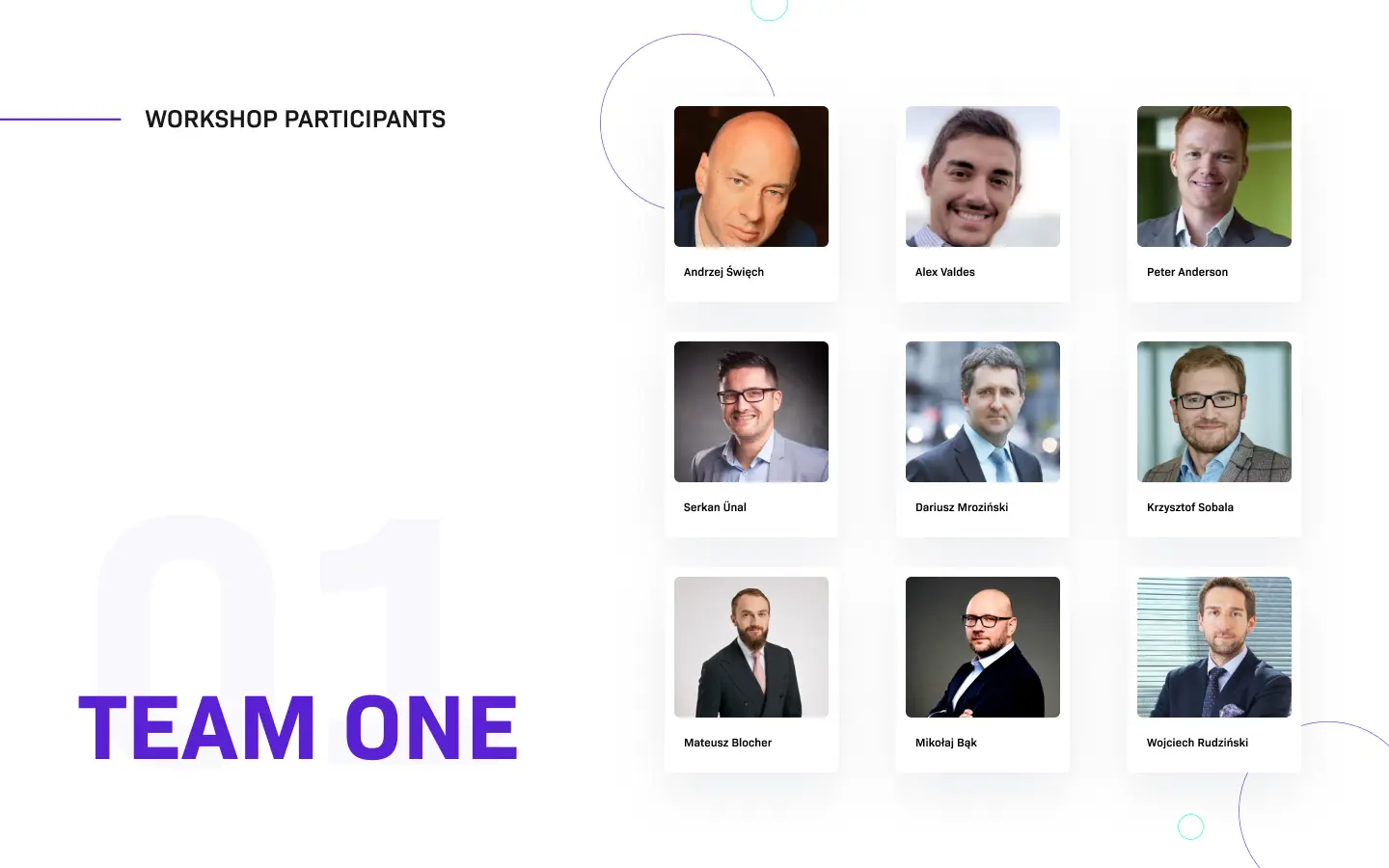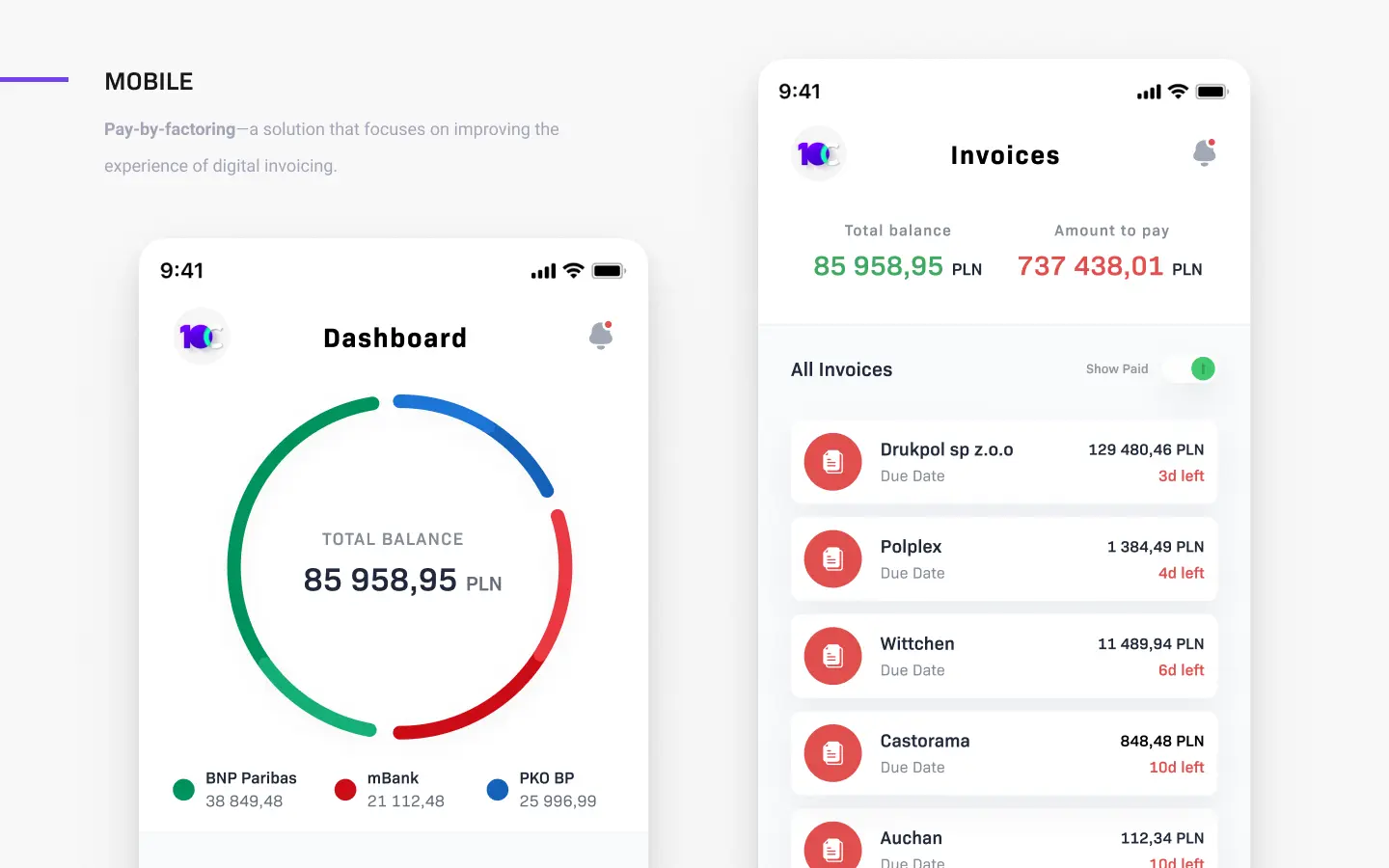Business Banking of the Future - Workshop 1: Credit Area
09.10.2020 | 3 min read

At 10Clouds, we are in constant communication with leaders in the banking industry. This time round, we decided to bring the leaders together to use our collective experiences and put forward innovative ideas and solutions that will help improve the financial industry processes.
Through our research on the banking industry, we discovered three main challenges.
1. The market turmoils, increasing regulatory restrictions and the rise of challenger banks are having an impact on the profitability of legacy banks, with some legacy banks unable to keep up.
2. With legacy banks, it’s difficult to reshape or define new business models in a fast pace environment, allowing them to improve their profitability while also keeping up with the market innovations
3. Clients are demanding new and faster ways of providing financial services in areas of credit products, which legacy banks are unable to address this quickly enough
To help us solve these challenges, 10Clouds led Design Sprint 2.0 workshops with two teams, allowing us to address some of the identified challenges, design solutions, and verify them with real users.

Workshop 1: Credit area
Our focus: In the credit area of business banking, how might we move from a product focus, to a focus on user experience and behaviour?
Attendees:
- Mariusz Łukasiewicz - CEO, BNP Paribas Faktoring Sp. z o.o.
- Jacek Jurczyński - Division Head Group Capital Markets Corporates & Retail Sales at Raiffeisen Bank International AG
- Michał Hojowski - Managing Director, Head of Capital Markets Department w BNP Paribas Bank Polska
- Maciej Meder - Managing Director Poland at zeb Consulting
- Wojciech Iwański - Senior Counsel at Sołtysiński Kawecki & Szlęzak
- Kees Jan Koppenaal - Commercial Director EMEA at Mambu
Our defined challenges:
- How might we change from product to customized client journey, while improving the bank onboarding experience?
- How might we design a solution that integrates banking and non-banking services to create increasing value for clients?
- How might we design a solution that supports businesses with daily operational tasks?
Our findings:
Throughout the workshop, we collaboratively decided that our main focus area should be on designing a solution that supports businesses with daily operational tasks.
We considered and discussed that in the future traditional in-branch banking will cease to exist, meaning that there could be a solution that integrates all the banking services available in branches on one platform, where automation could form its core to help streamline the workflow and decision making for the clients.
The current situation:
- Businesses have to gather all invoices manually and scan paper documents
- Businesses use a combination of different banking apps and physical presence to manage invoice payments
- Businesses usually use desktop solutions for the above processes due to the possibility of having different tabs open for different invoices and bank accounts
Our winning solution:
We came up with a number of potential solutions, but the winning one was Pay-by-factoring—a solution that focuses on improving the experience of digital invoicing.
Our prototype:
A mobile application that will automatically pull invoices from different services (e.g. e-mail box), allowing users to see all of their invoices in one place, that also shows if when the invoice is due and if it’s been paid.
Users can quickly and easily pay for the invoice or even request financing for an invoice, in just 3 steps.

“Thinking about the Bank of the Future, we need to consider how to connect banks and customers in a human-to-human way. We as bankers need to help fulfill the ambitions and business dreams of the people behind these companies - that way we can create a community and truly become long-term partners.”
Mariusz Łukasiewicz - BNP Paribas Faktoring Sp. z o.o.
Testing:
We then tested this approach among a target user group of 4 - this included the CFOs and CEOs of micro and medium sized companies. Users were asked questions around functionality, desirability and flow, with the aim of verifying the value hypothesis for the end user.
Feedback:
When asked how important such a solution is on a scale from 1–10, the average answer was 8.9/10
What’s next:
On the testing we realised that there was a strong need for such a solution to help businesses, yet we’ve identified some UX issues that need to be addressed to ensure the usability is perfect. Our next steps are to refine the experience, take the designs one step further in a more unique direction, find ways to develop automation into the experience, and lastly partner up with key leaders to make this an actual working prototype.



